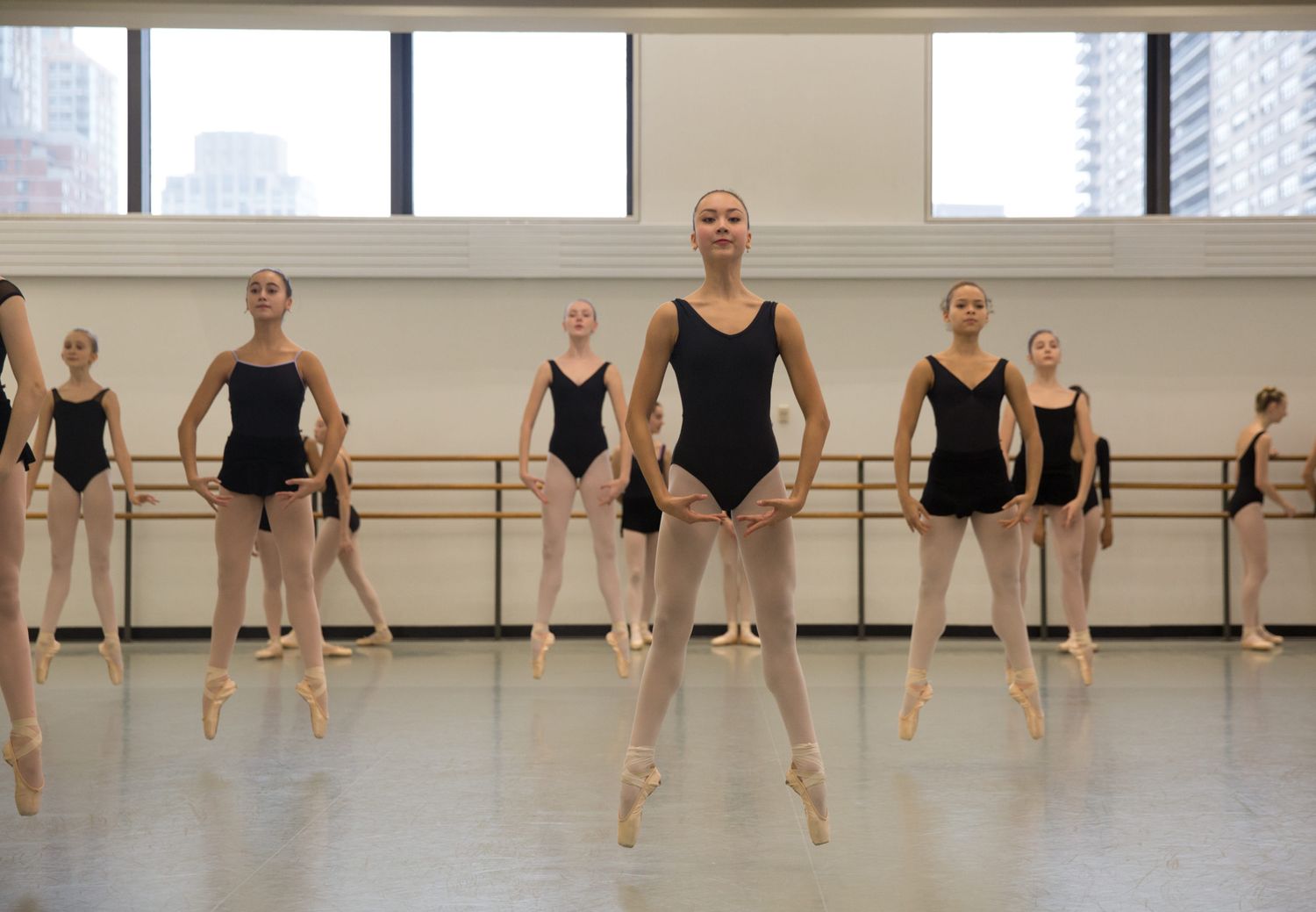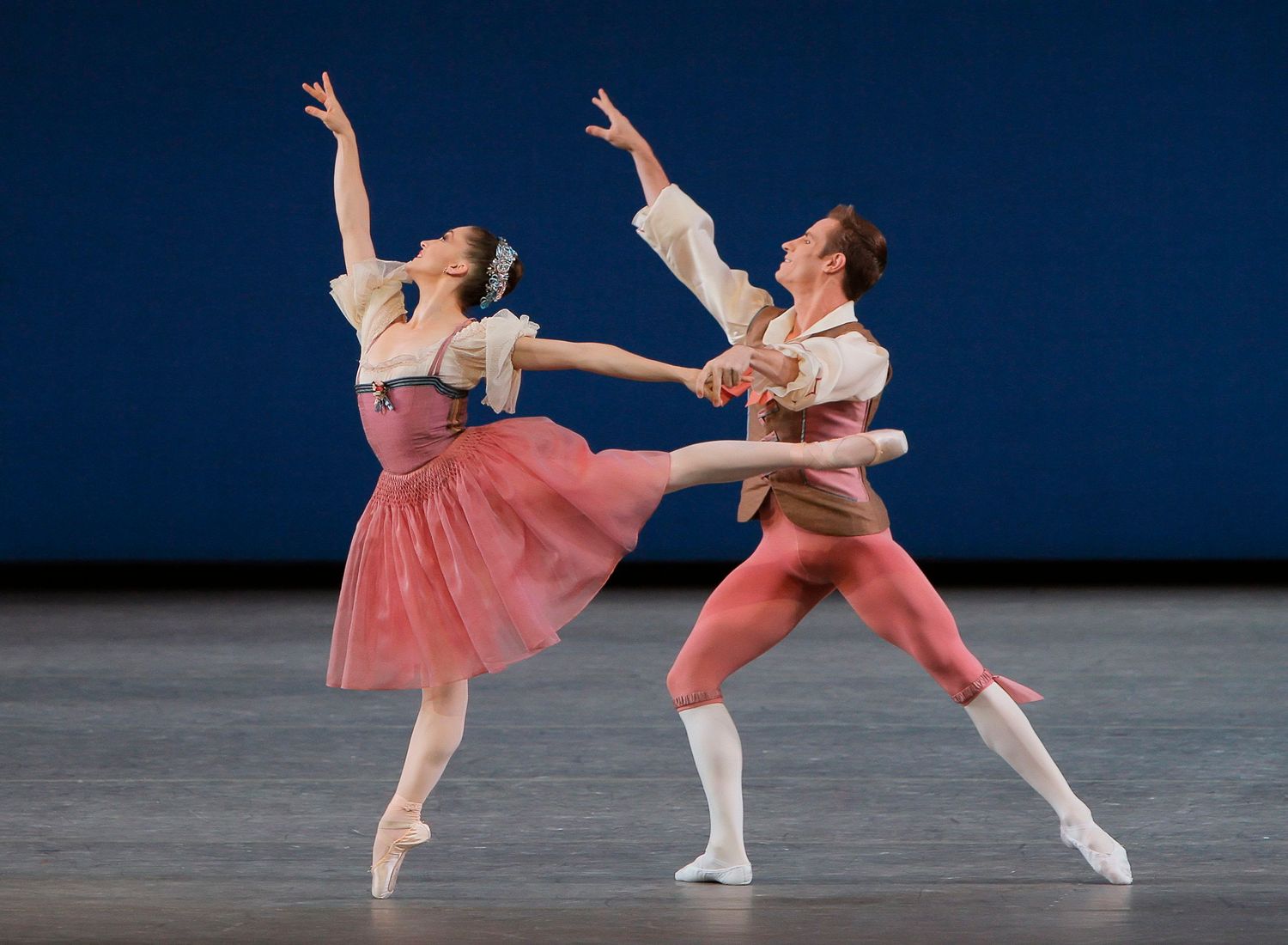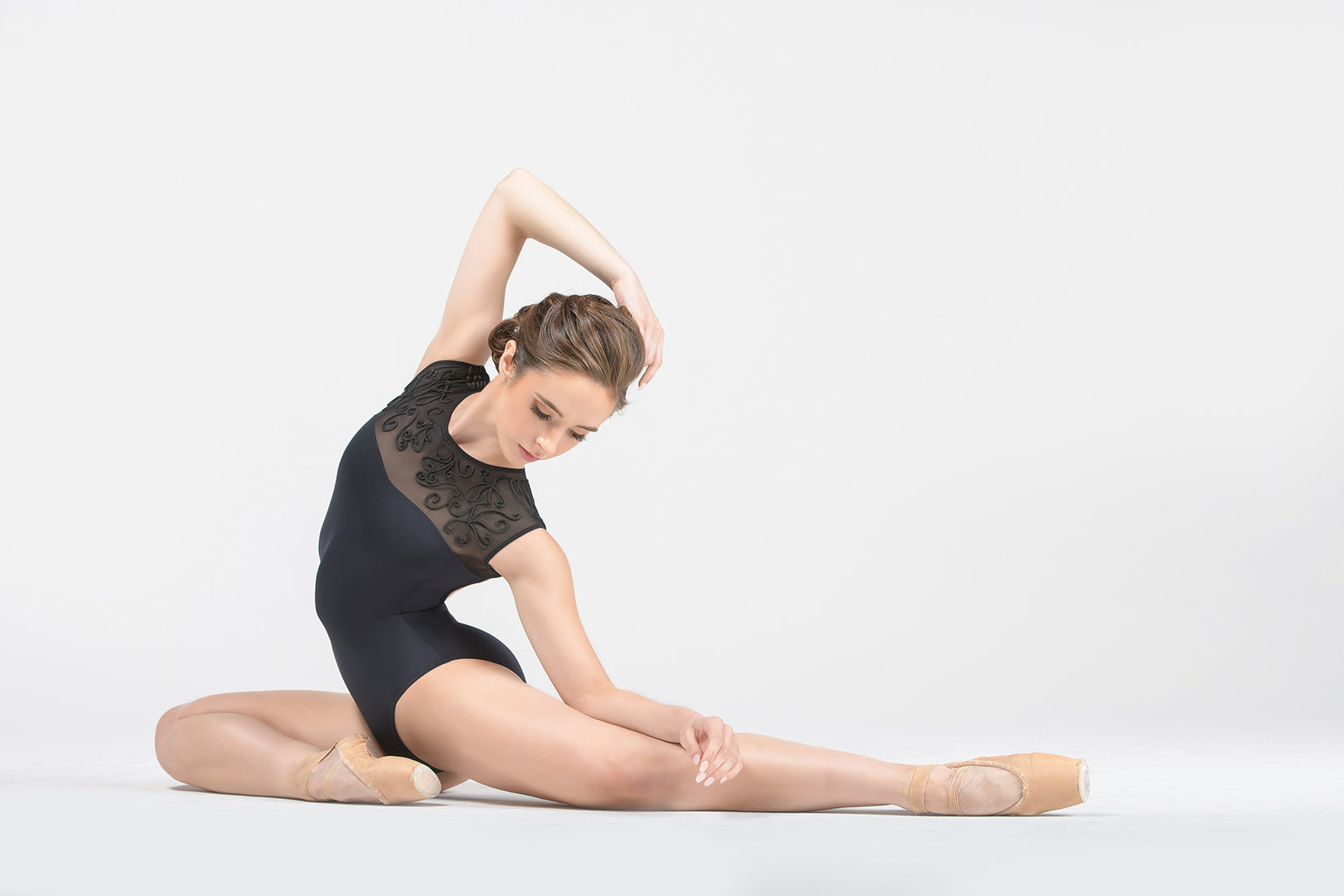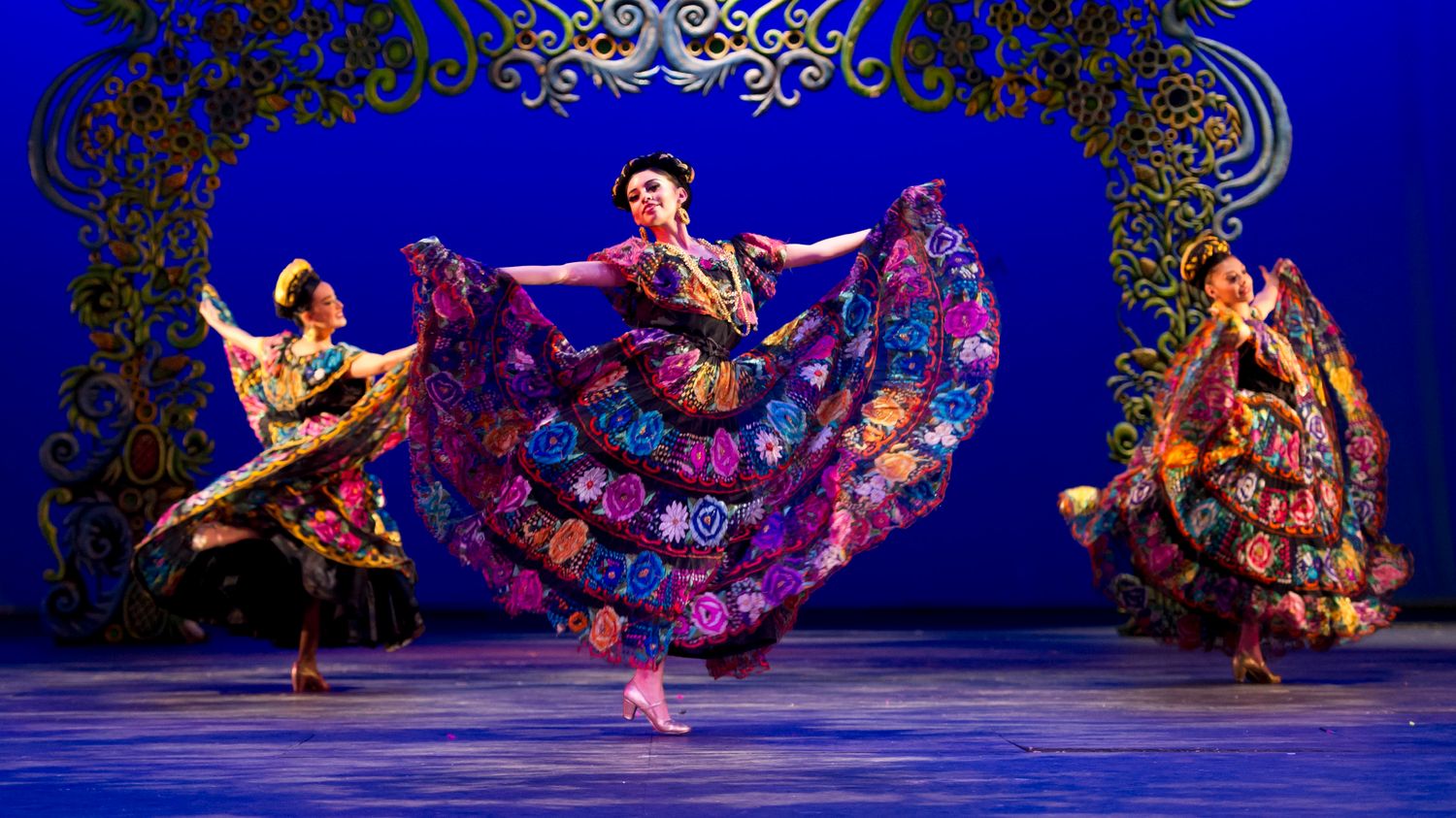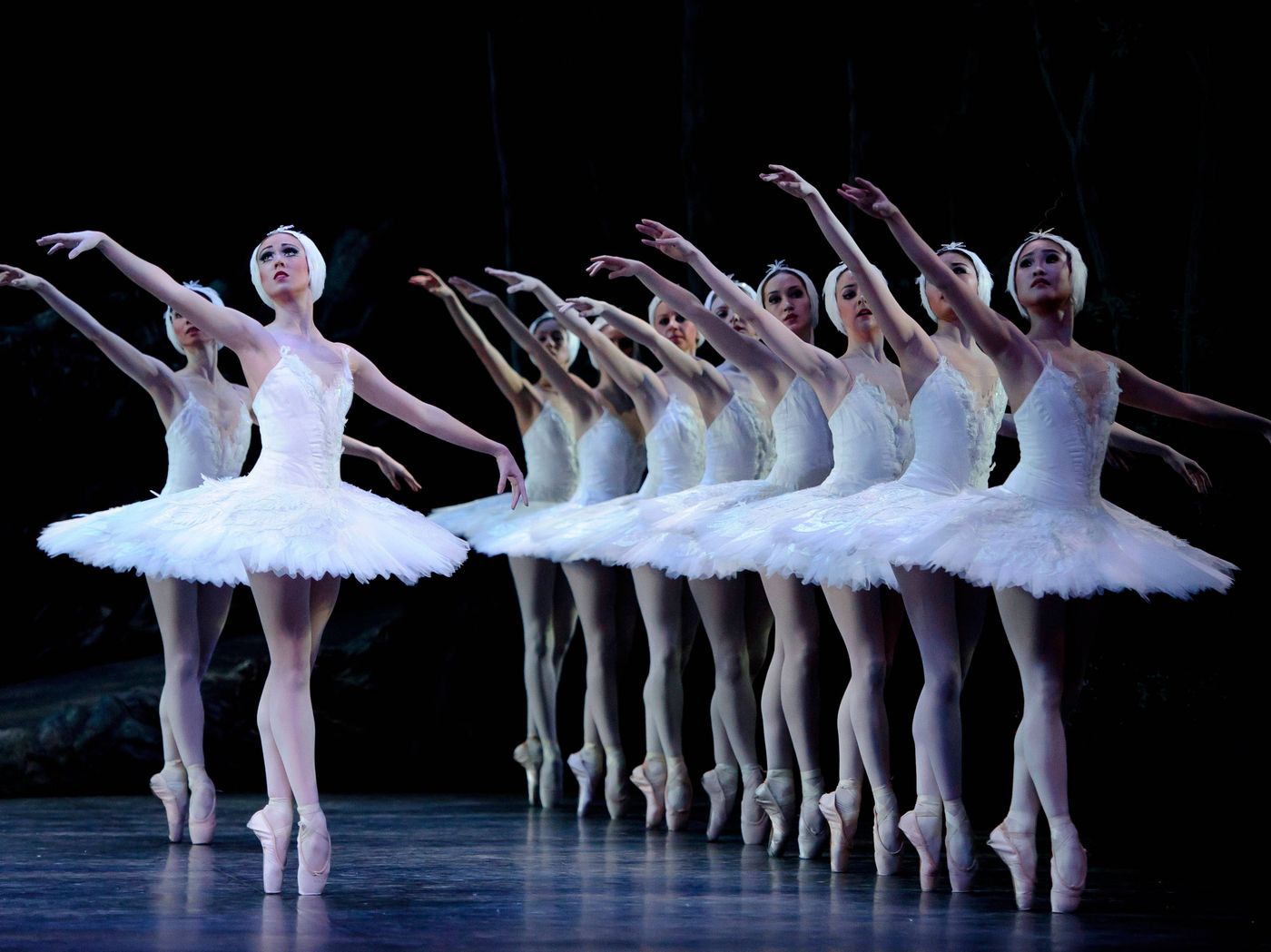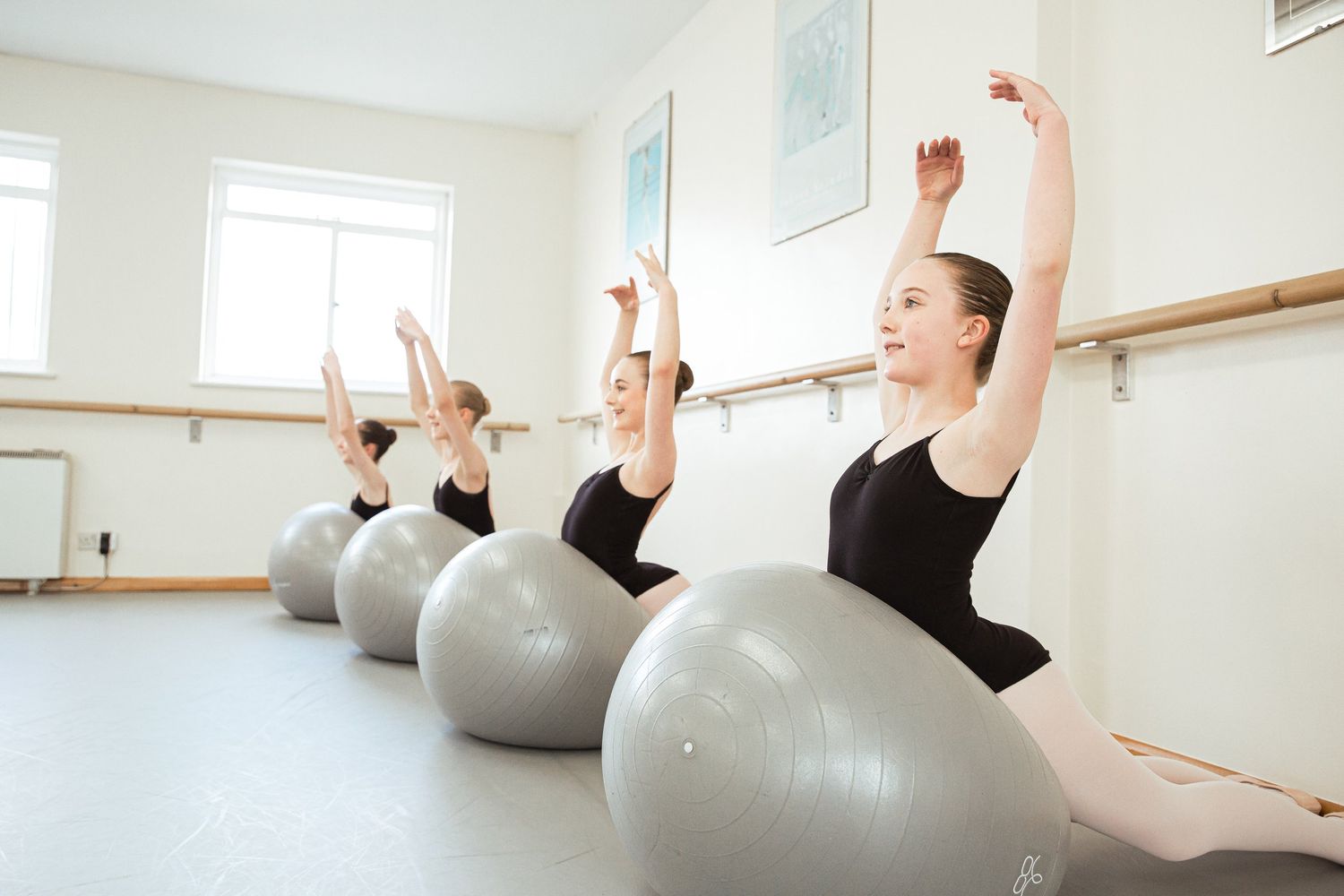Home>Events & Info>Ballet>What Are The 7 Movements Of Ballet
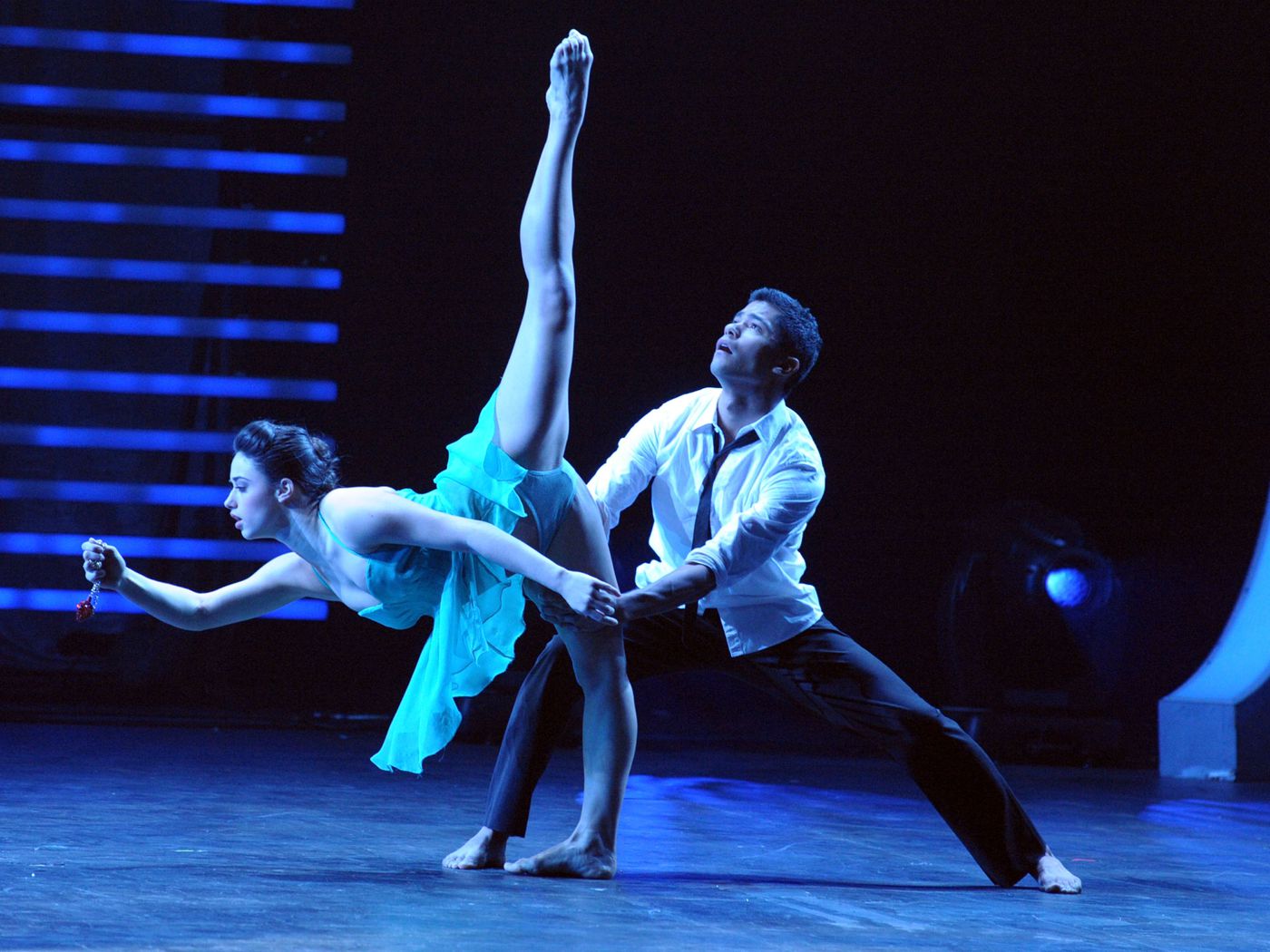

Ballet
What Are The 7 Movements Of Ballet
Published: January 9, 2024
Discover the exquisite artistry of ballet as we delve into the 7 essential movements that define this graceful dance discipline. Uncover the secrets of ballet with our expert insights and explore the beauty of this timeless art form.
(Many of the links in this article redirect to a specific reviewed product. Your purchase of these products through affiliate links helps to generate commission for AudioLover.com, at no extra cost. Learn more)
Introduction
Ballet is a beautiful and expressive form of dance that has captivated audiences for centuries. Known for its grace, precision, and artistry, ballet requires years of training and dedication to master the intricate movements and techniques. Central to the art of ballet are the seven fundamental movements that form the foundation of classical ballet technique. These movements, known as the “Seven Movements of Ballet,” are essential for every ballet dancer to learn and master.
In this article, we will explore each of these seven movements, detailing their technique, purpose, and significance within the world of ballet. From the elegant plié to the dazzling pirouette, each movement showcases the control, strength, and artistry of the ballet dancer. Whether you are a ballet enthusiast or an aspiring dancer, understanding these movements will deepen your appreciation for the beauty and complexity of ballet.
So, let’s dive into the enchanting world of ballet and discover the magic behind the seven essential movements that define this graceful dance form.
Plié
The plié is one of the most fundamental movements in ballet and serves as the starting point for many ballet steps. The word “plié” is derived from the French verb meaning “to bend,” and that is exactly what this movement entails: a bending of the knees.
There are two types of plié: demi-plié and grand plié. In a demi-plié, the knees are bent halfway, while in a grand plié, the knees are bent fully. These movements are typically performed in various positions, such as first position, second position, and fifth position.
The purpose of the plié is multifaceted. It serves as a warm-up for the legs and prepares the body for more demanding movements. The plié also helps to develop strength and flexibility in the legs, ankles, and feet. Additionally, it promotes proper alignment and posture, as dancers must maintain a tall and lifted position throughout the movement.
When performing a plié, the dancer should descend smoothly and evenly, keeping the heels grounded and the knees aligned over the toes. The upper body remains upright, with the abdominal muscles engaged and the shoulders relaxed. As the dancer ascends from the plié, they should focus on maintaining control and stability, allowing the movement to flow seamlessly into the next step.
The plié is not only a foundational movement in ballet but also a versatile one. It is incorporated into various steps and combinations, such as jumps, turns, and balances. By mastering the plié, dancers not only develop technical precision but also enhance their artistry by infusing the movement with grace and gracefulness.
Next time you watch a ballet performance, pay close attention to the plié. It may seem simple at first glance, but its importance and impact on the overall quality of the dance cannot be understated. The plié truly exemplifies the elegance and strength that ballet dancers possess, making it a cornerstone of this exquisite art form.
Tendu
Tendu is another essential movement in ballet that is used to develop strength, control, and precision in the legs and feet. The word “tendu” is derived from the French word meaning “stretched,” and this movement involves the dancer stretching their leg and foot along the floor in a pointed position.
Tendu is performed from a neutral position with the legs and feet together. The working foot glides along the floor until it reaches a fully pointed position, while the supporting foot remains firmly rooted. The movement can be executed to the front, side, or back, creating various lines and shapes.
While tendu may appear simple, it requires immense control and attention to detail. Dancers must maintain proper alignment, ensure that the heel of the working foot remains in contact with the floor, and articulate the foot fully to create a beautiful, elongated line.
Tendu serves multiple purposes in ballet. It is often used as a warm-up exercise to prepare the feet and legs for more demanding movements. Tendu also helps develop strength in the feet by engaging the muscles of the arch and toes. Additionally, it improves flexibility, balance, and coordination.
One of the challenges of tendu is maintaining a sense of connection and energy throughout the body while executing the movement. The upper body and supporting leg should remain stable and engaged, providing a solid foundation for the working leg to move with precision and fluidity.
Tendu is a fundamental movement that is incorporated into many ballet combinations and exercises. It serves as a building block for more complex steps and helps dancers develop the necessary technique and artistry. By mastering tendu, dancers can create beautiful lines, express grace and elegance, and demonstrate their technical proficiency.
Next time you watch a ballet performance, observe how tendu is seamlessly integrated into the choreography. This seemingly simple movement holds tremendous importance in the dancer’s journey, embodying the precision and grace that defines the art of ballet.
Rond de Jambe
Rond de Jambe, meaning “round of the leg” in French, is a fluid and circular movement in ballet that showcases the dancer’s control, flexibility, and coordination. It involves rotating the leg in a circular motion while maintaining proper alignment and engaging the core muscles.
There are two main types of rond de jambe: en dehors and en dedans. En dehors, meaning “outward,” involves moving the leg in a circular motion away from the supporting leg. En dedans, meaning “inward,” requires the leg to move in a circular motion towards the supporting leg. Both variations of the movement are practiced in ballet and contribute to the dancer’s overall technical proficiency.
Rond de jambe can be performed in various positions, including à terre (on the floor) and en l’air (in the air). In an à terre rond de jambe, the working leg moves along the floor in a circular motion, while in an en l’air rond de jambe, the working leg is lifted off the floor and moves through the circular path in the air.
This movement serves multiple purposes in ballet. It helps to increase flexibility and mobility in the hips and promotes fluidity in transitions between steps. Rond de jambe also aids in strengthening the muscles of the legs and core, as dancers must maintain stability and control while executing the circular motion.
One of the key challenges of rond de jambe is maintaining a consistent circular shape throughout the movement. Dancers must focus on controlling the motion and avoiding any abrupt changes or deviations from the circular path. Proper alignment, turnout, and coordination between the upper body and lower body are crucial for executing rond de jambe with precision and grace.
During a ballet performance, you can observe rond de jambe being incorporated into various combinations and sequences. It adds a touch of elegance and fluidity to the choreography and allows dancers to showcase their technical skills and artistry.
Next time you watch a ballet, pay attention to the performers during rond de jambe. Notice their control, grace, and seamless transitions as they move their legs in a circular motion. This captivating movement truly exemplifies the beauty and versatility of ballet.
Grand Battement
Grand Battement, meaning “big beat” in French, is a powerful and dynamic movement in ballet that showcases the dancer’s strength, flexibility, and extension. It involves the leg being lifted high in the air with control and precision before returning to its starting position.
Grand Battement can be performed to the front, side, or back, with both legs working independently. The working leg is lifted forcefully, while the supporting leg remains straight and grounded. The movement should flow seamlessly and exude a sense of grace and power.
This movement is often used to develop leg strength, flexibility, and control. It helps improve extension, articulation of the feet, and stability in the supporting leg. Grand Battement also contributes to the development of balance, coordination, and alignment.
A key aspect of executing Grand Battement correctly is maintaining proper alignment and control throughout the movement. Dancers should focus on engaging the core and maintaining a lifted posture. The movement should be executed with control and precision, avoiding any unnecessary tension or excessive movements.
Grand Battement is commonly found in allegro (fast and lively) combinations and can be used to create moments of dynamic expression and energy on stage. It requires a combination of strength, flexibility, and artistry to execute the movement with maximum impact.
When watching a ballet performance, Grand Battement is often a highlight, as it showcases the dancer’s skill and athleticism. Pay attention to the height and control of the leg as it extends into the air, and observe the beauty and fluidity of the movement as it seamlessly transitions into other steps.
The Grand Battement embodies the grandeur and power of ballet, allowing dancers to express themselves in a dynamic and breathtaking way. It is a test of strength, control, and artistry, making it a cherished movement within the ballet repertoire.
Adagio
Adagio, derived from the Italian word meaning “at ease,” is a ballet term used to describe slow, sustained movements that emphasize grace, control, and balance. It is a central component of classical ballet and often featured as a prominent section within a ballet piece.
In an adagio, dancers move with deliberate, flowing motions, showcasing their strength, flexibility, and artistry. This movement requires seamless transitions, controlled extensions, and precise footwork. Adagio allows dancers to display their technical skills while evoking emotions and creating a sense of poise and beauty on stage.
Adagio sequences often involve intricate partnering work, with male dancers supporting and lifting their female counterparts. These sequences require synchronization, trust, and a strong sense of connection between the dancers.
The purpose of adagio in ballet is two-fold. Firstly, it allows for the development of control, balance, and alignment. Dancers must display proper body placement, smooth transitions, and a seamless flow of movement. Secondly, it serves as a moment of artistic expression and storytelling. Dancers can convey emotions through their movements, creating visually captivating and emotionally engaging performances.
Adagio movements require a combination of strength, flexibility, and grace. Dancers need to maintain control and stability while executing slow, sustained movements and holds. They must display a deep understanding of musicality and phrasing, allowing their movements to be in harmony with the accompanying music.
When watching a ballet performance, pay close attention to the adagio sections. Observe the dancers’ control, their graceful extensions, and their ability to convey emotion through subtle movements. Adagio showcases the depth and artistry of ballet, captivating audiences with its beauty and elegance.
Adagio is a testament to the discipline and dedication of ballet dancers. It highlights their technical proficiency, artistic expression, and ability to captivate audiences through the power of slow, controlled movements.
Allegro
Allegro, meaning “fast” or “lively” in Italian, is a vibrant and energetic movement in ballet that showcases the athleticism, agility, and precision of dancers. It encompasses a variety of quick and dynamic steps, jumps, and turns that require speed, power, and a strong sense of musicality.
Allegro is characterized by its fast tempo and quick footwork. It includes steps such as jumps, leaps, hops, and quick traveling movements across the stage. The goal of allegro is to create a sense of lightness and buoyancy, with dancers effortlessly gliding through the air and executing intricate footwork with precision.
Timing and musicality play a crucial role in allegro. Dancers must have an acute sense of rhythm and be able to execute steps precisely in sync with the accompanying music. It requires quick thinking, coordination, and the ability to maintain control and balance in rapid movement sequences.
Allegro requires a strong technical foundation, including a solid understanding of proper placement, coordination, and alignment. Dancers must have well-developed leg and core strength to execute jumps and turns with power and control. Flexibility and articulation of the feet are also essential for precise footwork and smooth landings.
Within allegro, there are various jumps and turns that dancers master, including sautés, jetés, tours en l’air, and fouettés. All of these steps require a combination of strength, agility, and artistry to execute with precision and grace.
When watching a ballet performance, pay close attention to the allegro sections. Observe the dancers’ speed, the height of their jumps, and the precision of their footwork. Marvel at their ability to seamlessly navigate intricate sequences, showcasing their athleticism and technical prowess.
Allegro brings excitement, energy, and a sense of exhilaration to ballet performances. It is a testament to the skill and artistry of dancers, as they effortlessly execute fast and intricate movements with grace and precision.
Pirouette
Pirouette, meaning “to whirl” or “to spin” in French, is a breathtaking movement in ballet that showcases the dancer’s balance, control, and technical proficiency. It involves a full rotation of the body while maintaining a controlled and balanced position on one leg. Pirouettes are often considered one of the most iconic and challenging movements in ballet.
Pirouettes can be performed in various positions, such as first position, fifth position, or with the working leg extended in arabesque or attitude. The dancer starts by preparing with a plié and then executes a swift and precise turn, keeping the body aligned and the arms in an aesthetically pleasing position.
To execute a successful pirouette, a dancer must have a strong foundation in technique. Balance, core strength, and proper placement are essential. The supporting leg provides stability and contributes to a controlled rotation, while the working leg and arms maintain a harmonious and visually pleasing line.
There are different types of pirouettes, including single pirouettes, multiple pirouettes, and various variations like the fouetté pirouette or the pirouette en dehors and pirouette en dedans. Each variation presents its own set of challenges and requires advanced technique and body control.
Timing is crucial in pirouettes. Dancers must have an acute sense of musicality, knowing exactly when to initiate the turn and maintain the necessary momentum and speed. Spotting, the technique of focusing the eyes on a fixed point, is also crucial for maintaining balance and preventing dizziness during multiple rotations.
When executed flawlessly, pirouettes seem effortless and graceful, with the dancer appearing to effortlessly float and spin through the air. The beauty of pirouettes lies in their ability to captivate audiences with their elegance, artistry, and technical precision.
Next time you watch a ballet performance, pay close attention to the pirouettes. Marvel at the dancer’s ability to rotate gracefully and effortlessly, showcasing their control and artistry. Witnessing a well-executed pirouette is truly a breathtaking moment in the world of ballet.
Pirouettes epitomize the artistry and technical prowess of ballet. They require years of training, discipline, and dedication to master. With each turn, dancers exemplify the beauty and magic that can be achieved through the combination of skill and grace.
Conclusion
Ballet is a captivating art form that requires immense dedication, discipline, and technical proficiency. At the heart of classical ballet technique are the seven fundamental movements: plié, tendu, rond de jambe, grand battement, adagio, allegro, and pirouette. These movements serve as the building blocks for a dancer’s training and are essential in creating beautiful, expressive performances.
From the controlled and graceful plié to the dynamic and powerful allegro, each of these movements showcases different aspects of a dancer’s abilities. The plié and tendu lay the foundation for proper alignment and flexibility, while rond de jambe and grand battement focus on fluidity and strength. Adagio allows dancers to showcase their control and artistry, and allegro highlights their speed and agility. Lastly, pirouettes epitomize the balance, precision, and elegance that ballet dancers strive for.
These seven movements are not only technical exercises but also vehicles for storytelling and emotional expression. Within each movement, dancers can convey emotions, tell narratives, and captivate audiences through their grace, strength, and artistry.
Whether you’re a ballet enthusiast, a dancer yourself, or simply someone who appreciates the beauty of the art form, understanding these seven movements provides a deeper appreciation for the skill, dedication, and creativity that ballet dancers embody.
So, the next time you watch a ballet performance, pay attention to the pliés that set the stage, the tendus that create lines and shapes, the rond de jambes that flow with elegance, the grand battements that exude power, the adagio that expresses emotion, the allegro that dazzles with speed, and the pirouettes that leave you breathless. Each movement tells a story and allows dancers to share their passion with the audience.
Ballet is a timeless art form, and these seven fundamental movements are the threads that weave together the intricate tapestry of the dancer’s journey. They embody the grace, power, and artistry that make ballet a truly captivating and enchanting experience.


